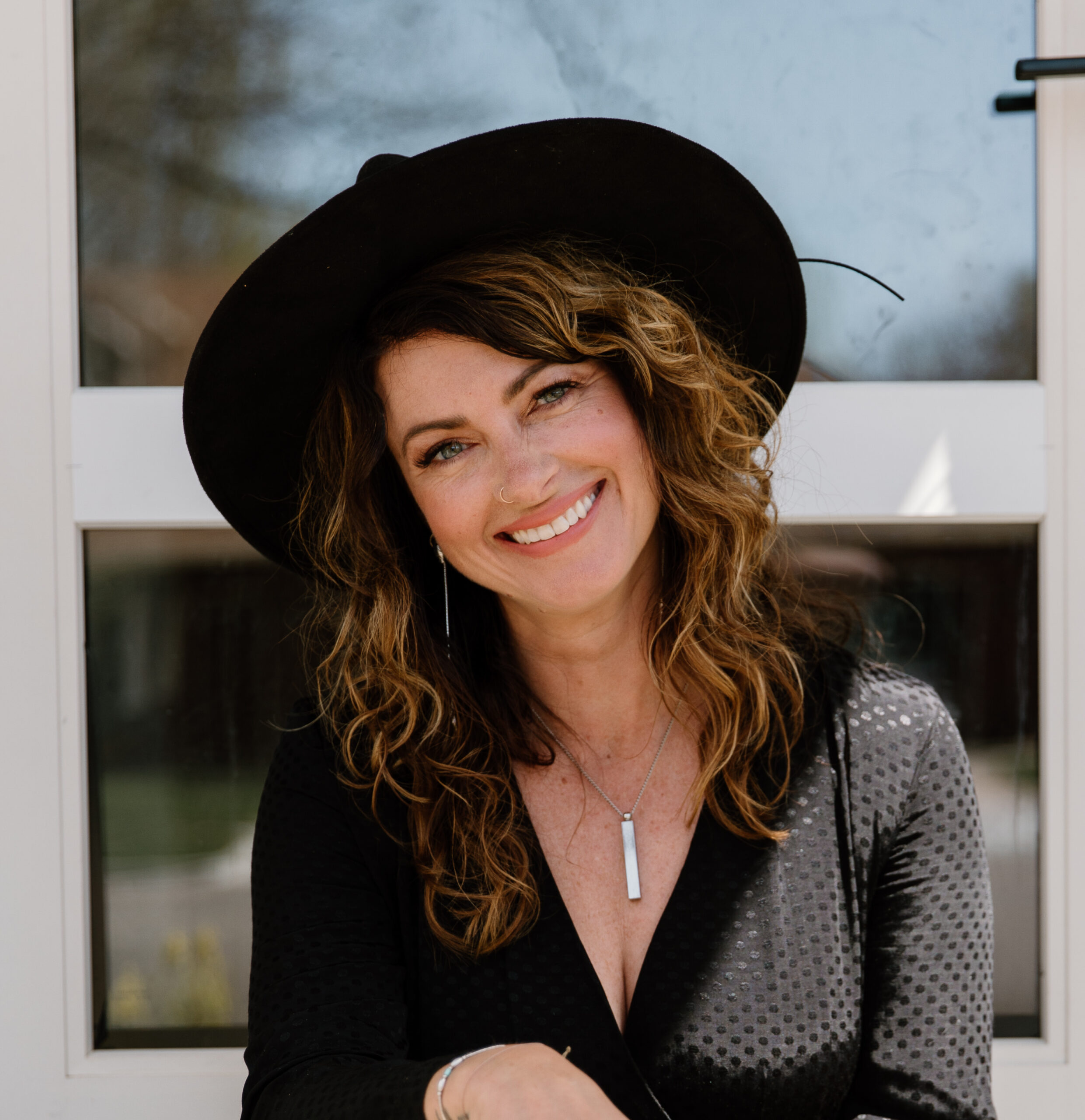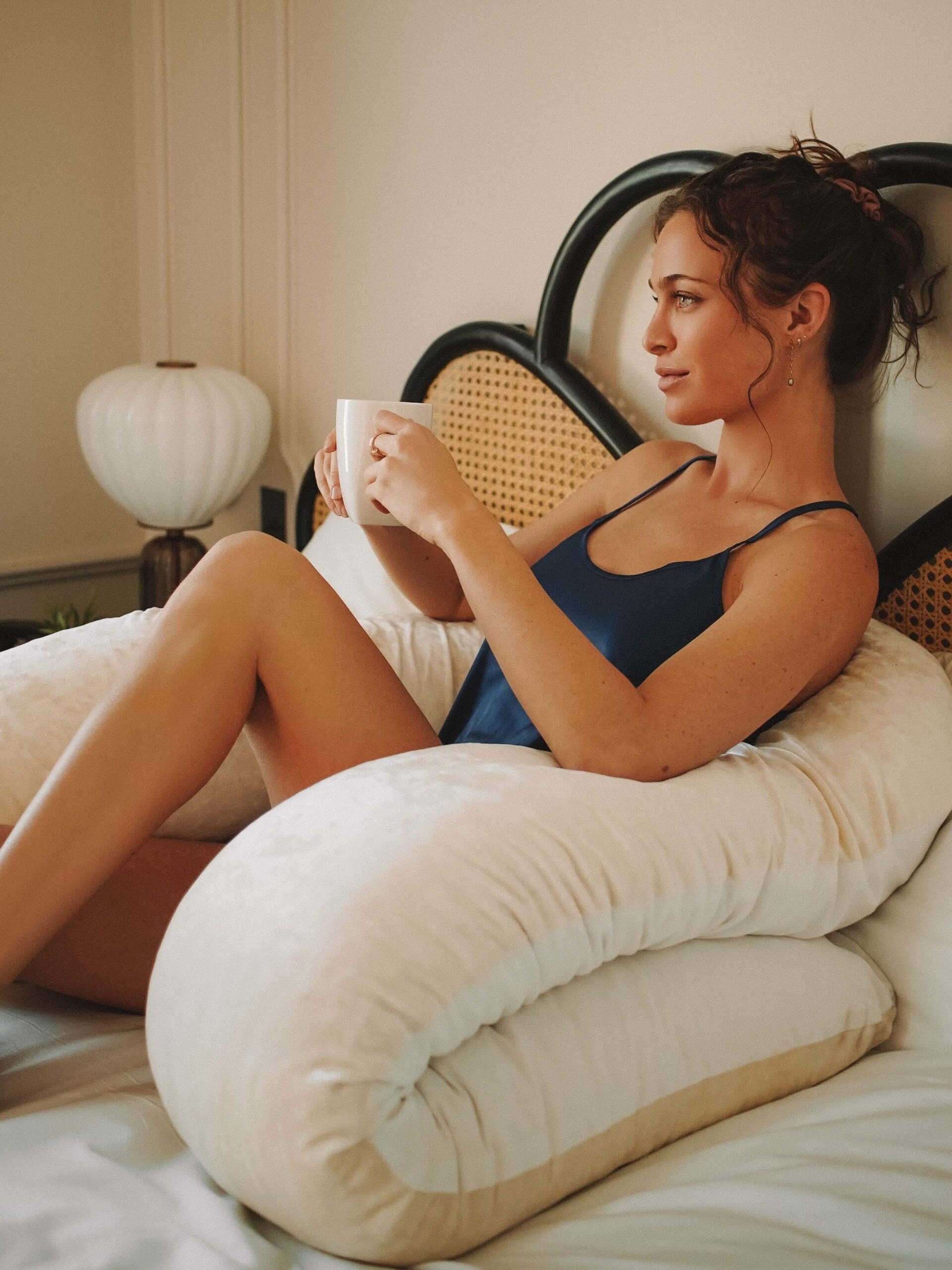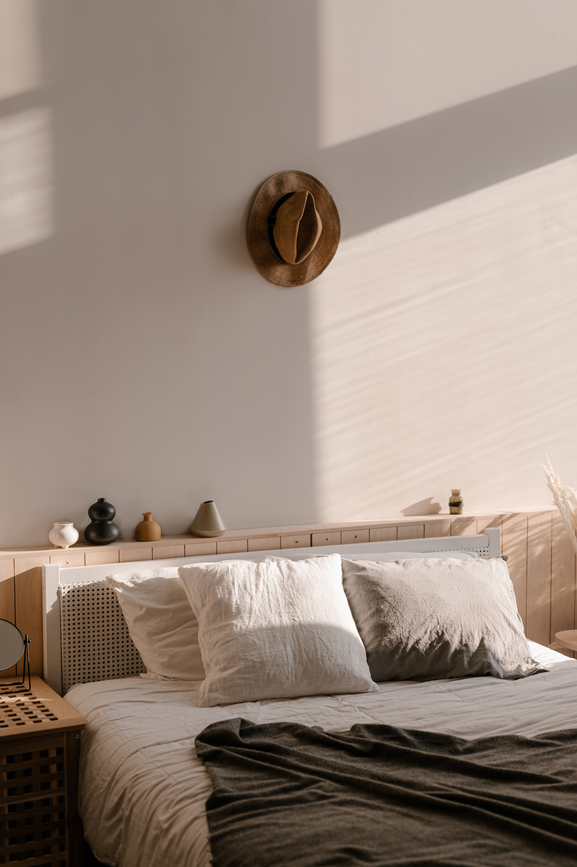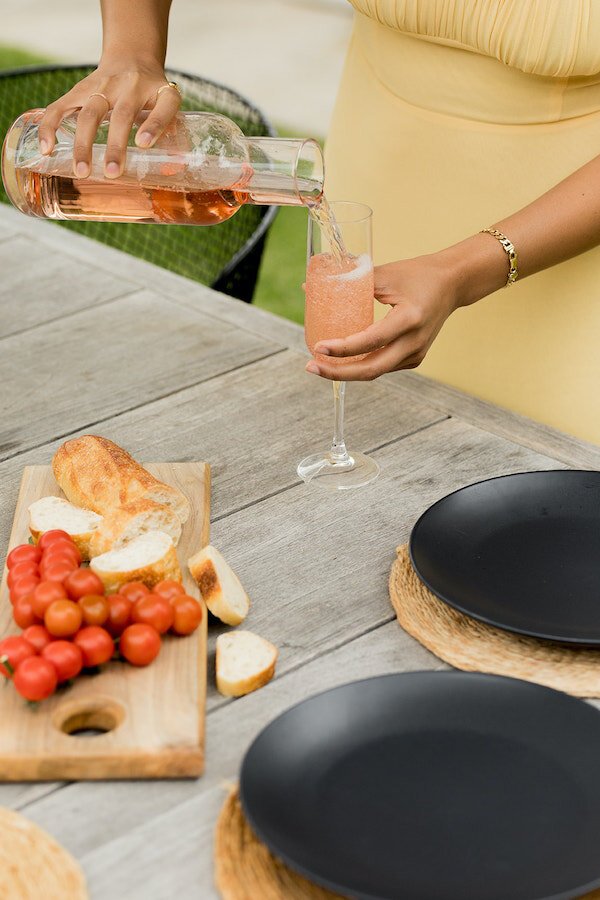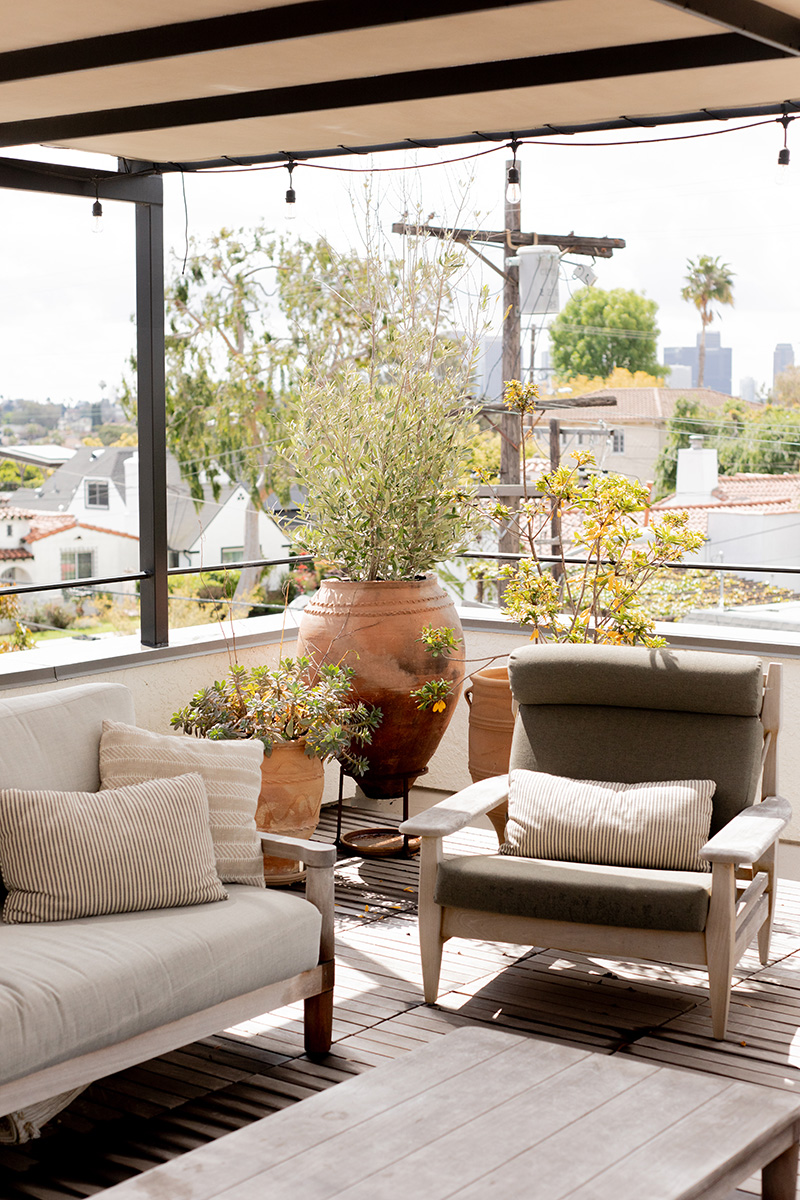
How To Use Neurodesign To Feel Safe In Your Space
I didn’t learn I had a nervous system until I was 37. I mean, there must have been something about it in school, but it took total adrenal fatigue to get me in the door of a somatic therapist who started our first session by asking me where in my body I could locate a felt sense of safety.
“I’m sorry. I don’t understand your question,” I replied.
She repeated it: “Scan your body. Where do you feel safe?”
My blank stare said it all.
I had started working as an interior designer three years prior to my nervous system awakening — tasking myself with the goal of creating spaces that made people feel, as my therapist would say, safe. But it wasn’t until I began dabbling in neuroscience that I understood why certain design choices made people feel truly at home.
It’s called neurodesign, a growing field of research combining neuroscience and psychology to better understand how the human body responds to environmental elements.
What is neurodesign?
Neurodesign centers on the fact that we all have nervous systems. One of the nervous system’s primary directives is to keep us safe. So, like a seasoned bouncer sitting on a stool in the center of the body, the nervous system constantly scans our surroundings for a threat.
“One of the nervous system’s primary directives is to keep us safe.”
Our nervous systems are reading things on the inside (this is called interoception) like a fever, hunger pains, heart rate variability, or a strain in your lower back. They are also reading things on the outside (exteroception) like facial expressions, tone of voice, ambient noise, smells in the air, the feel of a tag inside your shirt, the ways colors interact, and lighting intensity. The position and movement of your body in space (proprioception), like how close you’re sitting to an exit, how far away you are from the person yelling at the cashier in the grocery store, or how slumped you are when sitting in your office chair, also has a neurological effect on the nervous system’s perception of wellbeing.
These perceptions are influenced by a whole other set of stimuli which are hard to categorize so I like to call them “the larger field.” These can include: Perceptions of the unknown, sensory processing sensitivity, environmental sensitivity, habituated patterns of behavior, implicit memory, epigenetics, generational trauma, historical trauma, ingrained cultural biases, internal narratives — all wrapped up in your unique neurobiology.
In essence, the more your environment cues your psychobiology to feel safe, the more you can rest. And the more you can rest, the more you can access a sense of home.
Tips for using neurodesign in your space
Neurodesign is all about dropping clues to tell your nervous system it can relax, that there is no threat. Below are some of my suggestions for experimenting with neurodesign in your space. Not every strategy will work for everyone, so pay attention to what works for you.
Add warm lighting
“Neurodesign is all about dropping clues to tell your nervous system it can relax, that there is no threat.”
I can’t have good conversations in restaurants with bad lighting. I can’t poop in highly lit bathrooms. I feel drained whenever I leave Costco (and it’s not just about the length of my receipt). Lighting plays a huge role in sensations of well-being. Bad lighting (like fluorescents) is proven to raise feelings of anxiety and irritability, while cool lighting (like blue and white light) kicks your nervous system into productive awareness. This is useful at the office, but not how you want to feel when you’re trying to come down from a long day.
For home, I recommend warm light. Warm light reminds our psychobiology of sunset and firelight, helping to unwind stress from our nervous systems and inspiring the desire for connective communication and social bonding. A soft yellow glow is comforting — think of what it feels like to take a night drive past a home all lit up from within like a storybook cottage. On the contrary, picture what it feels like to pass a home with only the blue light of a television flickering through the window. You might try turning on soft red light after dark. We literally saw red light in the womb, so the glow reminds us of that time in our lives when our fundamental needs were met. Plus, red light cues your circadian rhythms, ups your melatonin production, and counteracts the effect of all-day exposure to blue light (which sucks out melatonin).
“We literally saw red light in the womb, so the glow reminds us of that time in our lives when our fundamental needs were met.”
If you can change one thing about your lighting, switch your bulbs to my personal favorite: low-energy consumption LED Edison bulbs between 2200-3000K. I love the visible filament, hearkening back to Thomas Edison’s original light bulb.
Turn off overhead lights, including ceiling fan lights, and populate rooms with 3-4 area lamps per room — think of it like surround sound, only with light. Never use torchieres. Uplight throws gloomy shadows into corners and creates a feeling of unease. Other ways to tap into the healing power of light: Year-round twinkle lights, Fair Trade salt lamps, a thrift store vintage lamp sitting on a dining room table or a kitchen counter, rice paper pendants, and candles — one can never have too many candles. Check out this article for more ideas on places to source your warm glow.
Use natural and organic materials
Imagine a cinder block-walled room populated with laminate desks sitting on cold tile floors. The ceiling is a grid of rectangular tiles separated by thin metal strips. Fluorescent lights hang in white metal boxes. Chairs are molded plastic with metal legs. Every surface is hard-edged, in shades of black, gray, or white. You might be visualizing a high school classroom, the show “The Office,” or even a variation of a hospital room. These design elements aren’t fundamentally bad, but without the balance of organic shapes, rounded edges, and soft materials, our nervous systems interpret these cues as threatening, and thrust us into a place of high alert.
“So why do we design the places we work, learn, and ideally heal with such inhuman elements?”
So why do we design the places we work, learn, and ideally heal with such inhuman elements? Perhaps it’s easier to mass produce (and clean) the same laminate desk, plastic desk chair, or vinyl floor tiling, but the long-term effects come at a cost. Research proves that synthetic materials vibrate at a lower frequency than natural and organic materials, and that lower vibrational frequencies elicit lower vibrational emotions (like sadness, anger, fear, and guilt). I’m not saying you can solve chronic sadness with a wooden desk — that would be reductionist and honestly, a bit offensive, but small environmental changes can add up, and help tip the scale towards a more pervasive sense of being ok.
Biophilic design is a term used to describe the need for humans to connect with nature in our day-to-day environments. Research on biophilic design proves that the more we can bring nature inside and replicate characteristics of nature in design, the more we experience increased cognitive function, healing, and well-being. Our psychobiology remembers our roots — we used to live in intimate relationship with the earth.
“Our psychobiology remembers our roots — we used to live in intimate relationship with the earth.”
Some tips to bring more nature into your space: If you can, put your desk by a window. If you can’t do that, try a desk-sized water fountain or a plant on your desk. Soften hard edge and industrial vibes with organic, high-vibrational items like a sustainable table runner under your computer to mitigate the hard surfaces of a laptop, a linen throw draped over the square arm of your sofa, or a sustainable sheepskin on your desk chair for texture and comfort. For more ideas on how to bring biophilic design into your spaces, check out this article.
Indulge in a little chromatherapy
The history of chromatherapy, or color therapy, dates as far back as the ancient Egyptians. The Ayurvedic tradition assigns each chakra a color, and uses colors to help cleanse and align energy centers in the body. Both ancient traditions and modern research show that colors can affect not only our mood, they can even help with pain management in the body. For example, green is thought to stimulate a sense of balance and is known to help mitigate feelings of sadness and hopelessness. Blue is thought to calm anxiety (blue light is used to treat Seasonal Affective Disorder) and yellow is used to increase neuroplasticity by waking up your brain and helping you focus.
If you want a deeper dive into thoughts on color, check out a personal favorite of mine, the German poet Goethe’s Theory of Colours, written in 1810. 🎨
More than any tips I can offer, read your life: Notice what you are drawn to and when you feel the most alive and at peace. Which restaurants call your name? What shops do you love to shop in? What places in your city feel the most like home? Take stock of the elements at play in those built environments.
“Your nervous system is a wise teacher with an inherent sense for what feels good to your body.”
Your nervous system is a wise teacher with an inherent sense for what feels good to your body. If you love the wood paneling in your local coffee shop, see if there is a way to bring more wood elements into your home. If you covet your work buddy’s collection of rocks from his road trips, find your own.
There are so many things about life that you can’t control and that don’t feel safe, but you can make small design changes, like little reassurances, to tell your nervous system it’s doing a great job — there is no threat — it can rest…so you can rest.
Trinity Wilbourn is a Contributing Editor at The Good Trade. She is a Denver-based freelance writer, mind/body coach, and intuitive guide. As an educational consultant, she works at the intersection of Social Emotional Learning, Mindfulness, and the science of nervous system regulation. In her free time, she can be found hanging with her four kids, spooning her Bernedoodle, singing opera, and dancing in the kitchen. Learn more and explore her offerings at www.trinitywilbourn.com or follow her on Instagram.
